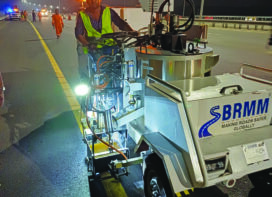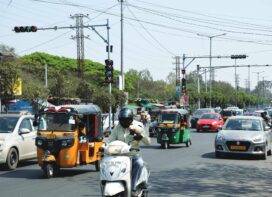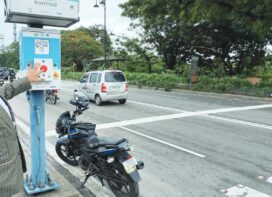Smart City consultants tell TrafficInfraTech on the role they play in choosing the right travel solution, integrating it into the macro picture, facing the challenges and making the smart travel option viable for the common man.
That the Government of India’s Smart City Mission is an ambitious and impressive initiative that will create 100 plus smart cities in India is a known fact by now. That the new cities, through best use of technology, will accelerate growth and improve the quality of life of people, is also evident. But what often gets overlooked in the entire process is the component in a Smart City.
When compared to the other components it may seem small but integrating this crucial aspect and customising it to suit each city requires careful planning and implementation. Consultants play a major role in this aspect.
 Alistair Gollop, Senior Intelligent Transport Systems Consultant at Mott MacDonald explains, “A smart city is an urban environment where infrastructure and services are interlinked using technology to improve the quality of life by enhancing their operation. The consultants use their expertise and experience of this complex setting to provide the city authorities and other stakeholders with an insight to how this interconnectivity provides a pathway to improving their services, whilst also accruing cost benefits by using shared infrastructure and data streams. Smart city implementations should also not be technology specific, but must take into account the capabilities and requirements of both the factors and forecast which are likely to be required over the coming years”.
Alistair Gollop, Senior Intelligent Transport Systems Consultant at Mott MacDonald explains, “A smart city is an urban environment where infrastructure and services are interlinked using technology to improve the quality of life by enhancing their operation. The consultants use their expertise and experience of this complex setting to provide the city authorities and other stakeholders with an insight to how this interconnectivity provides a pathway to improving their services, whilst also accruing cost benefits by using shared infrastructure and data streams. Smart city implementations should also not be technology specific, but must take into account the capabilities and requirements of both the factors and forecast which are likely to be required over the coming years”.
He adds, “The consultant will advise how the more traditional large scale technology architecture use a top-down topography (typically where the local authority purchases an overarching system from an equipment vendor), and how these will be needed to consider the increasing requirements to cater to individual bottom-up installations (usually small scale, single parameter sensors and apps) and how these can be incorporated to gain the maximum overall benefit. This flexibility will allow small and medium-sized enterprises along with individuals to contribute to, and benefit from, smart city infrastructure in ways which may not have been envisaged when the system was first set-up. Most people will imagine that a smart city deployment will incorporate sub-systems such as traffic management, street lighting and maybe items like drainage, but the consultant will show how disparate applications like social care, law enforcement and features to deal with civil emergencies should be considered”.
A Shankar, National Director, Head of Operations – Strategic Consulting (India and Sri Lanka), Jones Lang LaSalle is of the opinion that the main role of the consultants “is to study and analyze the existing traffic pattern, modal share, vehicular growth, current parking situation and future demand, and to study the Comprehensive Mobility Plan, Master Plan of the city, DPRs etc., to align the proposal accordingly”. He says, “The scope can include preparation of the proposal for the city during the planning stage and support the ULBs as PMU (handholding agency) during the implementation stage. Additional project level services like facility management, leasing of commercial and retail space in transit stations, project management services during construction, etc., too can be provided”.
So, a consultant is that link between the various stakeholders who balances the complete jigsaw puzzle of the various parts and gives them one common workable theme. Guy Perry, President – Cities & Strategy, Essel Infraprojects Ltd feels it is important to “objectively evaluate and refine the optimal transport solutions for a region, a city, or a district and to be sure that it will work efficiently for a broad cross section of citizens. In India the focus tends to be on motorized vehicles, at the expense of cyclists and pedestrians, though that does not reflect the needs of the majority of the citizens in many cities”.
 TrafficInfraTech Magazine Linking People Places & Progress
TrafficInfraTech Magazine Linking People Places & Progress


